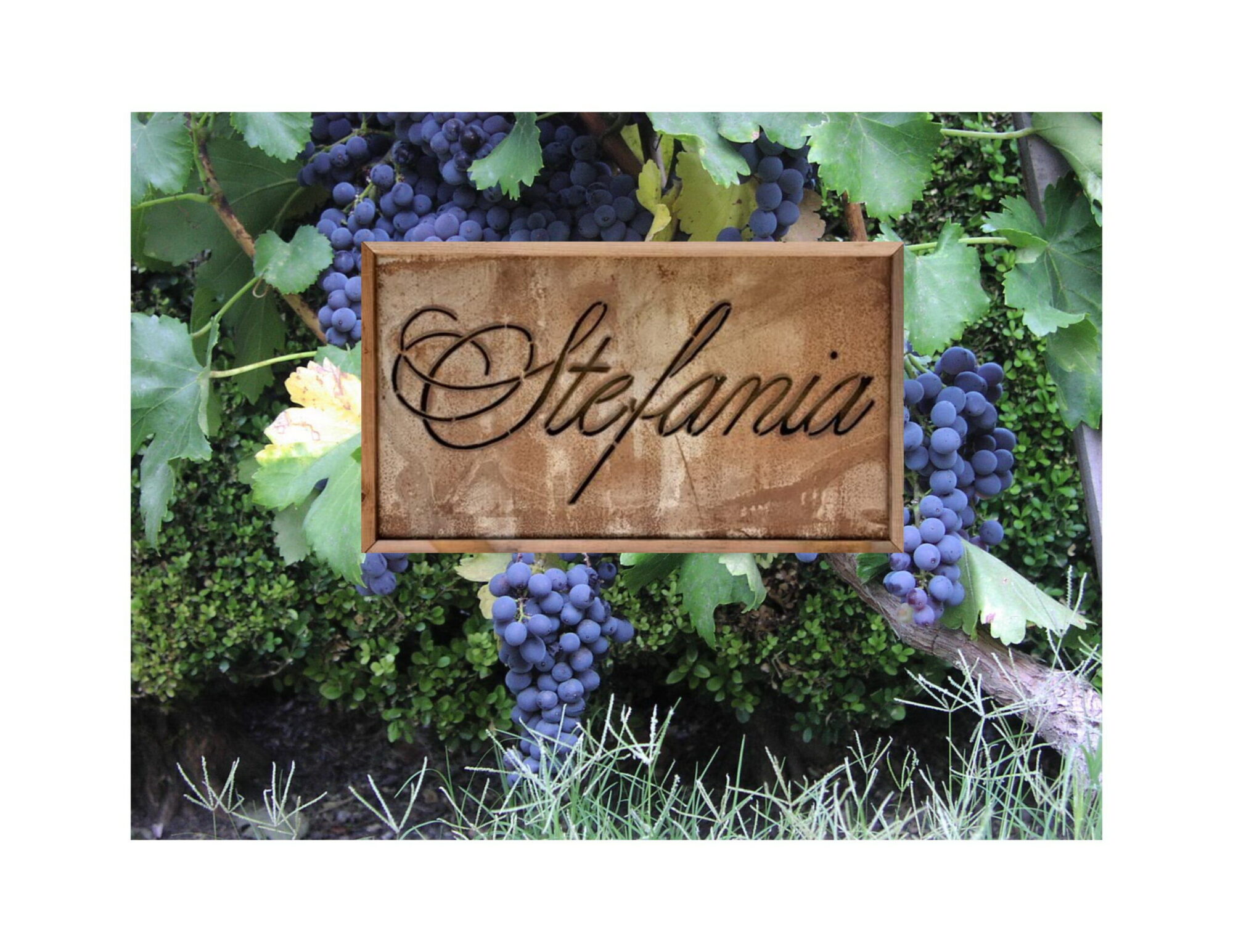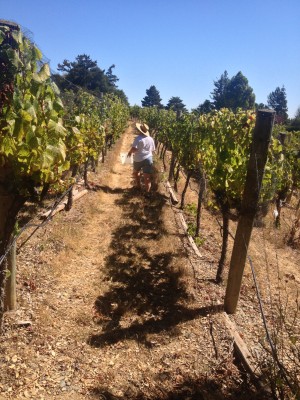Saturday Stefania and I logged 112 miles on the FJ Cruiser checking on vineyards and getting samples to do lab testing on. We started at Chaine d Or testing Chardonnay. We tasted the Cabernet Sauvignon and Merlot in the vineyard as we went but it’s really too early to do lab tests on those grapes yet.
We walk each row of the vineyard and pull berries from each plant, going back and forth to get each side of the row and each exposure. We also try and mix up the berries from the middle, bottom, and top of the cluster as well as pull from clusters in full sun and those on the interior of the plant. The idea is to get a sample that shows the entire vineyard not just those berries that are in sight. Stef is holding a white bucket that we use to gather the berries as we go.
At Chaine d Or it takes one person about an hour to get samples. Two people takes 30 minutes so we split up. It’s also important to taste as you go. That’s a good way to train your taste to recognize what the grapes are at in terms of lab readings. You sample 20-30 grapes in the vineyard, then go back and test and it’s instant feedback and learning. In this case the Brix was under 21 and the pH was 3.25 so now we both have an excellent idea of what the maturity level tastes like.
We’re also checking on secondary indicators of ripeness like brown seeds and brown stems on the clusters. Since each plant is getting a quick look we can also check for any issues. On Labor day weekend when I went out I noticed small amounts of Botrytis or Grey Mold in the vineyard. Under the wrong conditions this can be a disaster unless you spray right away. With the weather we’ve had though I though we would be ok. It’s been very hot and I know temperatures over 90 degrees will keep the mold from spreading and just shrivel the berries that have been effected making them very sweet and introducing the unique Botrytis flavor profile.
The walk through the vineyard confirmed that the mold was all dead and we’ll have about 60 clusters of Botrytis Chardonnay grapes in the wine, which is normal for the vineyard.
One final oddity that Stefania wanted me to take a picture of is a rouge Pinot Noir plant we have in the Chardonnay. It was probably a mix up at the nursery when then vineyard was originally planted. It was actually 4 years before we noticed the plant. The leafs are very similar between Chardonnay and Pinot Noir and the cluster shapes and sizes are also very close.

We kept missing this plant because the Pinot turns red earlier than the Cabernet Sauvignon. We usually don’t net the vineyard until the Cabernet turns color, so the birds were cleaning out this plant every year before we netted and could see the grapes were red and not white. I remember seeing the plant and thinking it odd that the birds would completely clean out one plant and not touch the others around it. That’s not super unusual, it’s how birds attack a plant. They eat one cluster completely before moving to the next and tend to clean out the plants one at a time. Stills it would be odd that they had not eaten any clusters off the neighboring plants.
When we discovered this plant last year it was mostly eaten but there were a few clusters left that helped us identify it. We made an effort this year to get it netted early and will use the grapes in our Santa Cruz Mountains Pinot. Chaine d’Or also has a rouge Zinfandel plant in the Chardonnay and a group of plants we are pretty sure are Pinot Gris in the Merlot section. The birds love Pinot Gris and most of those get eaten early every year.



